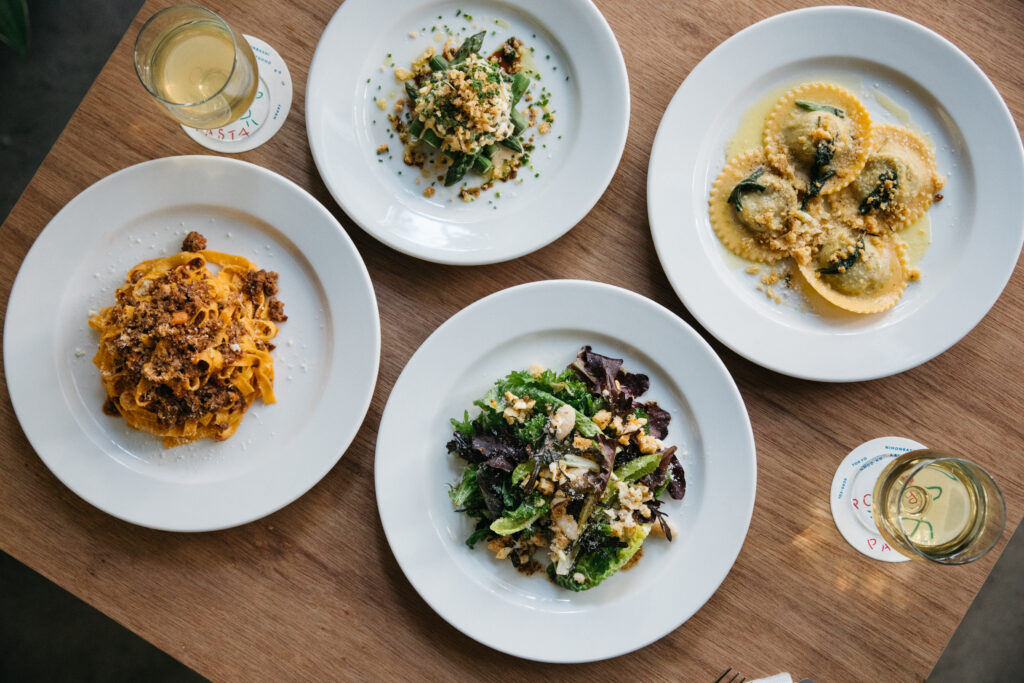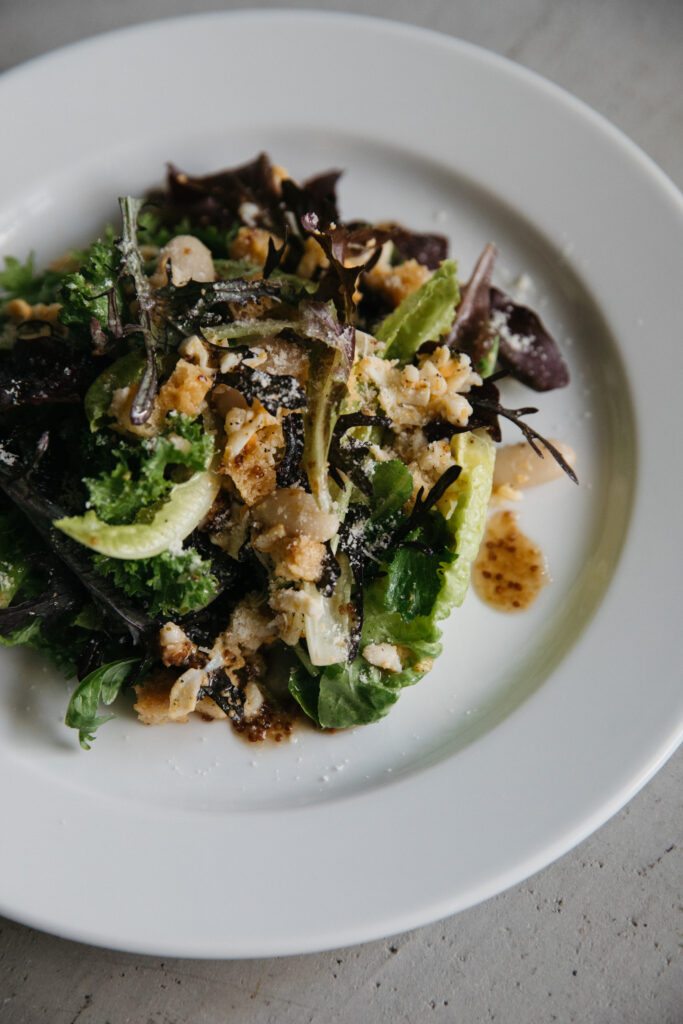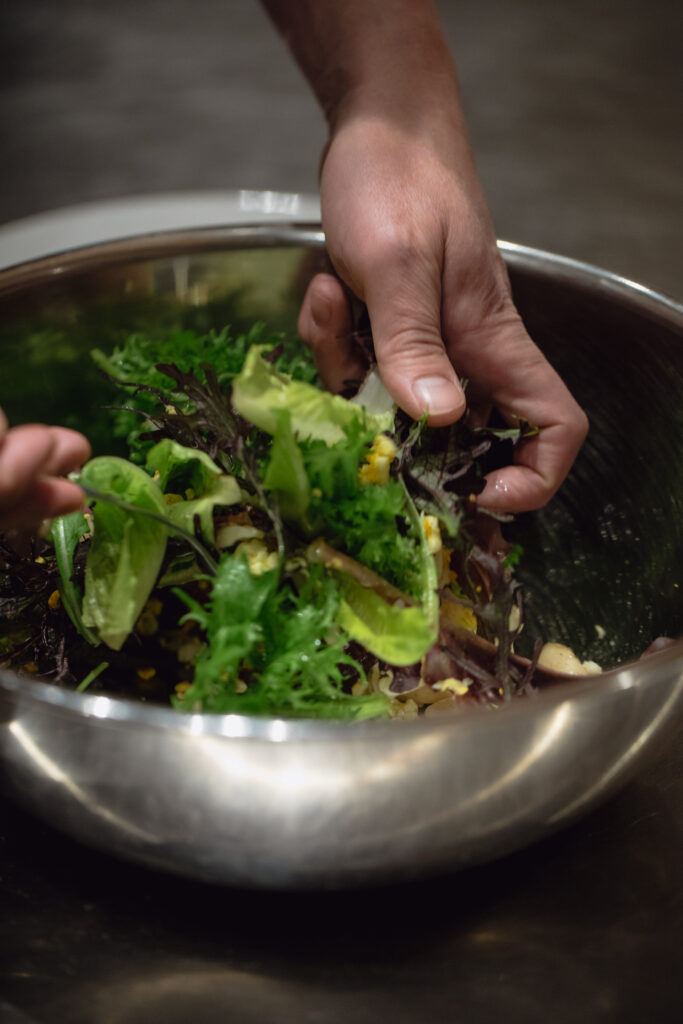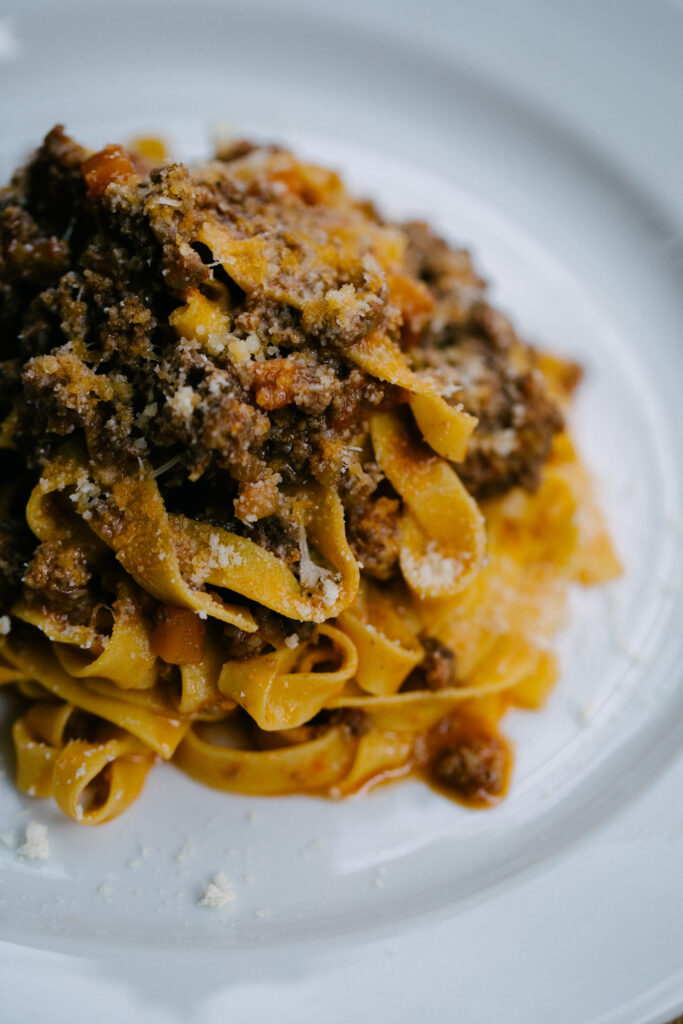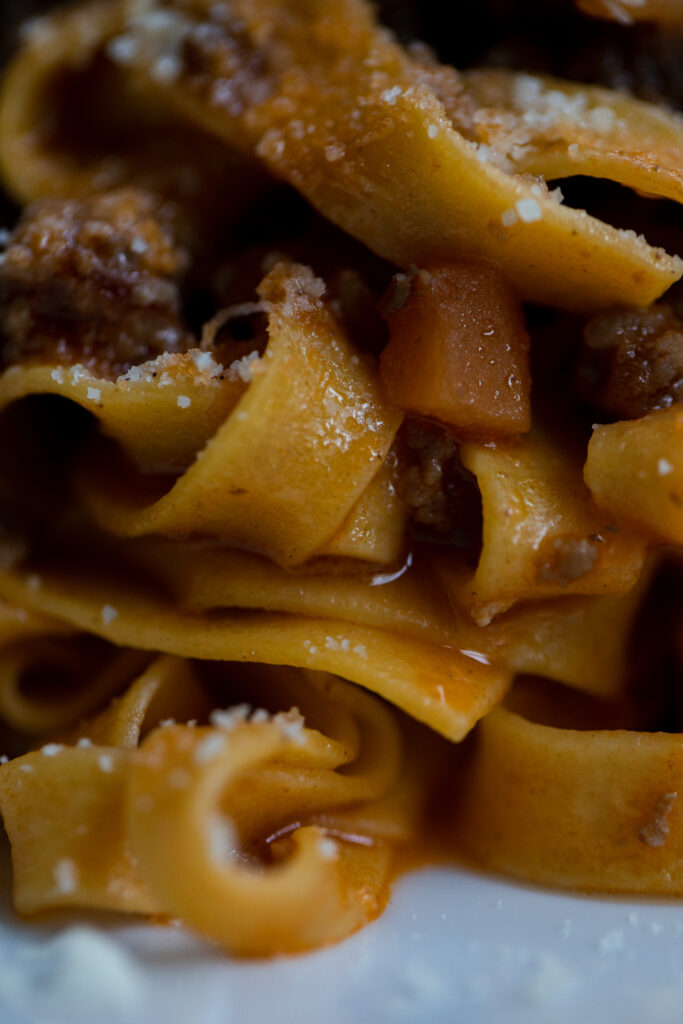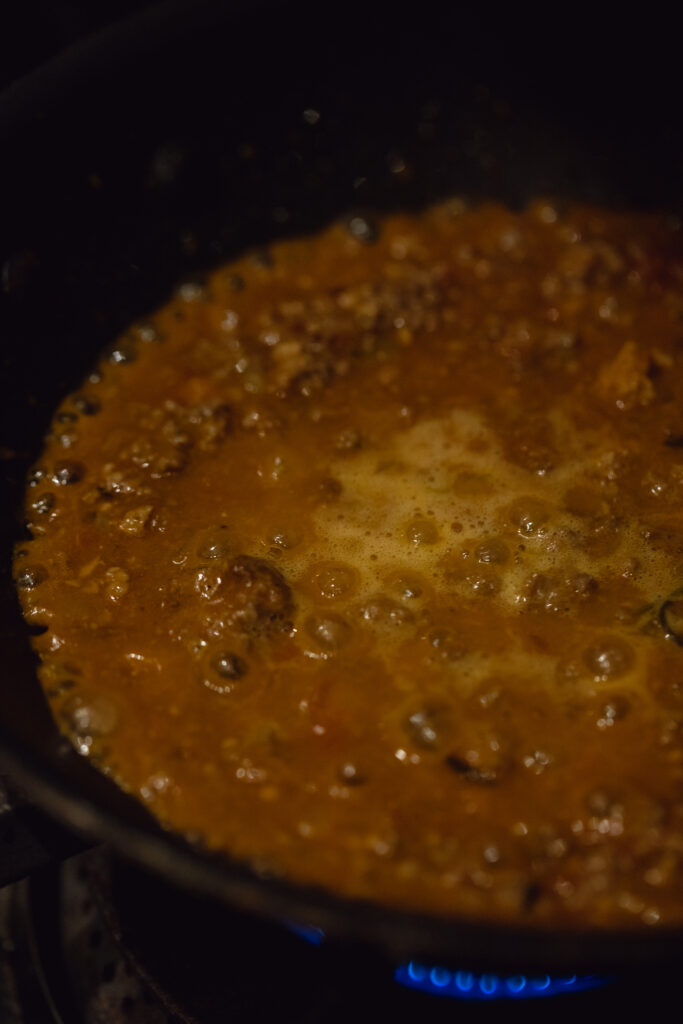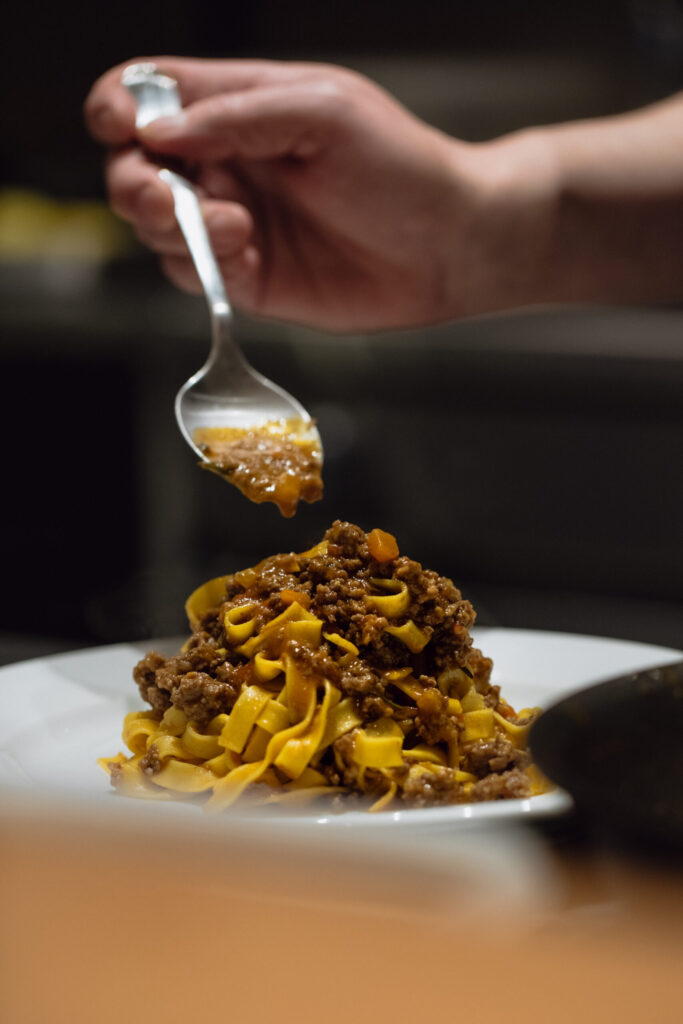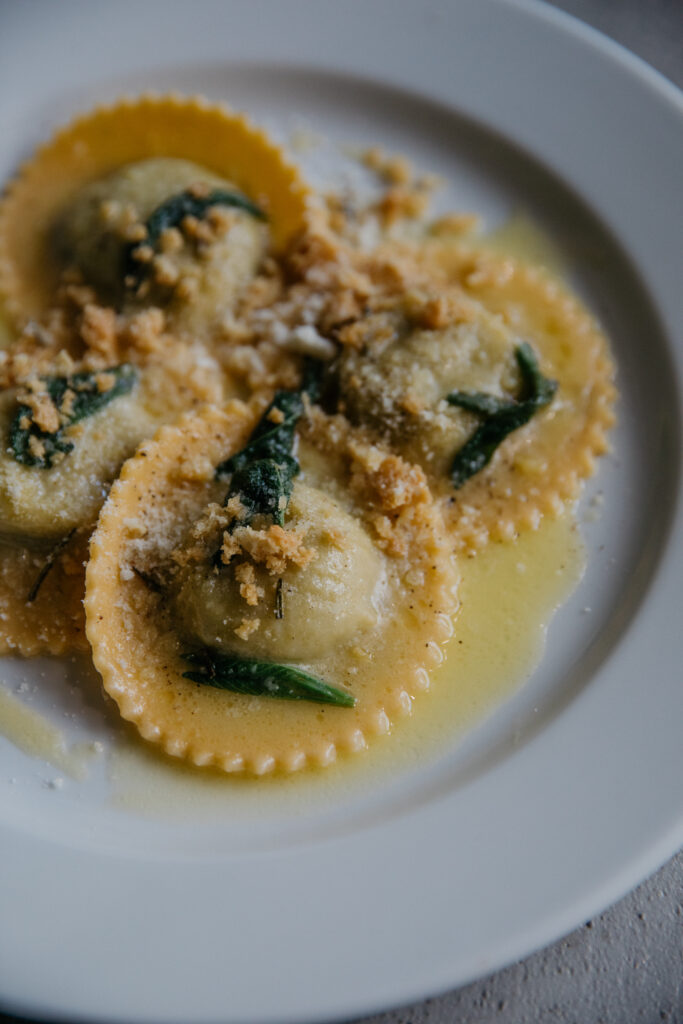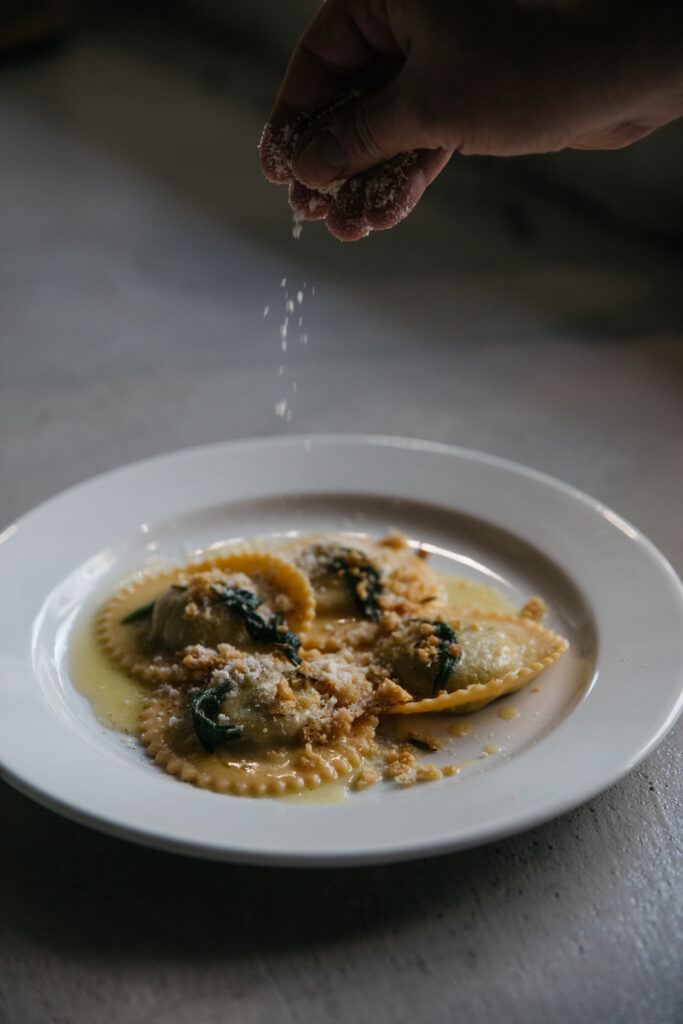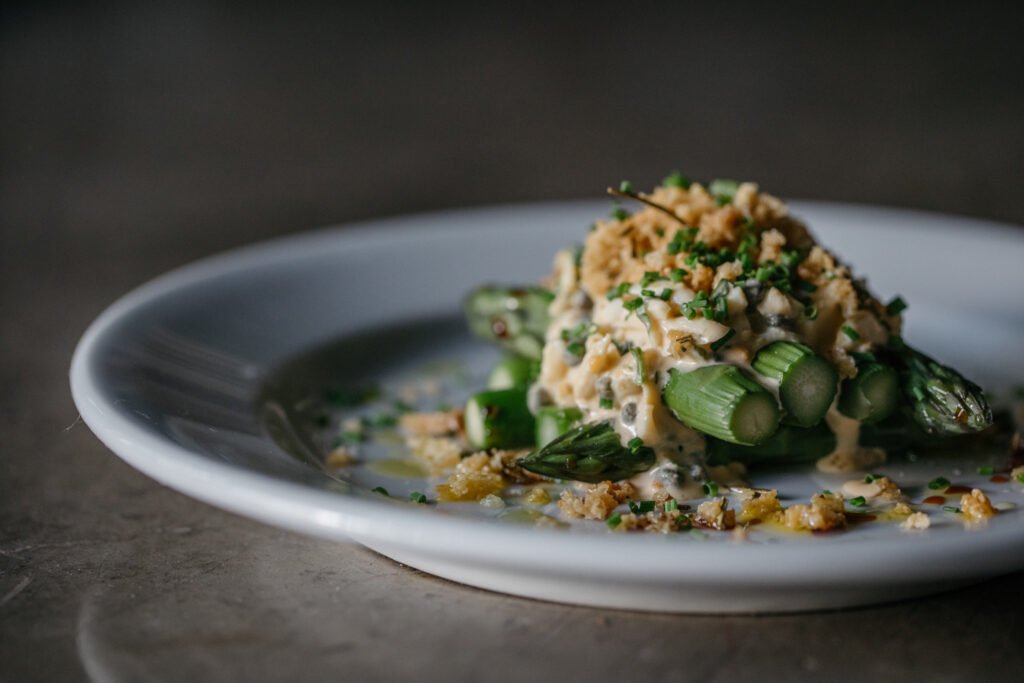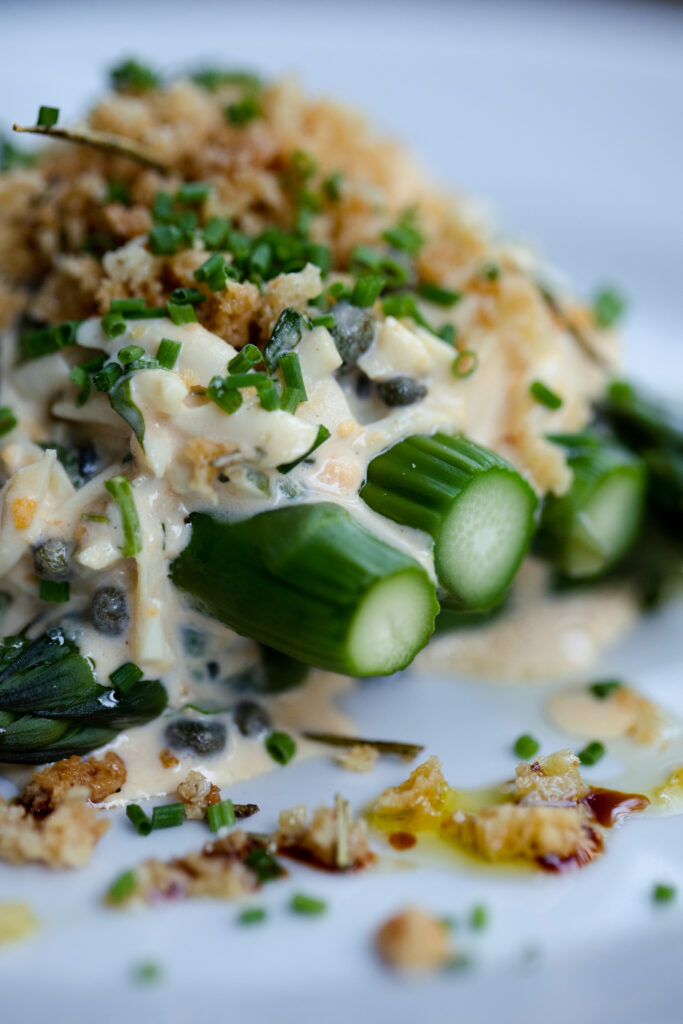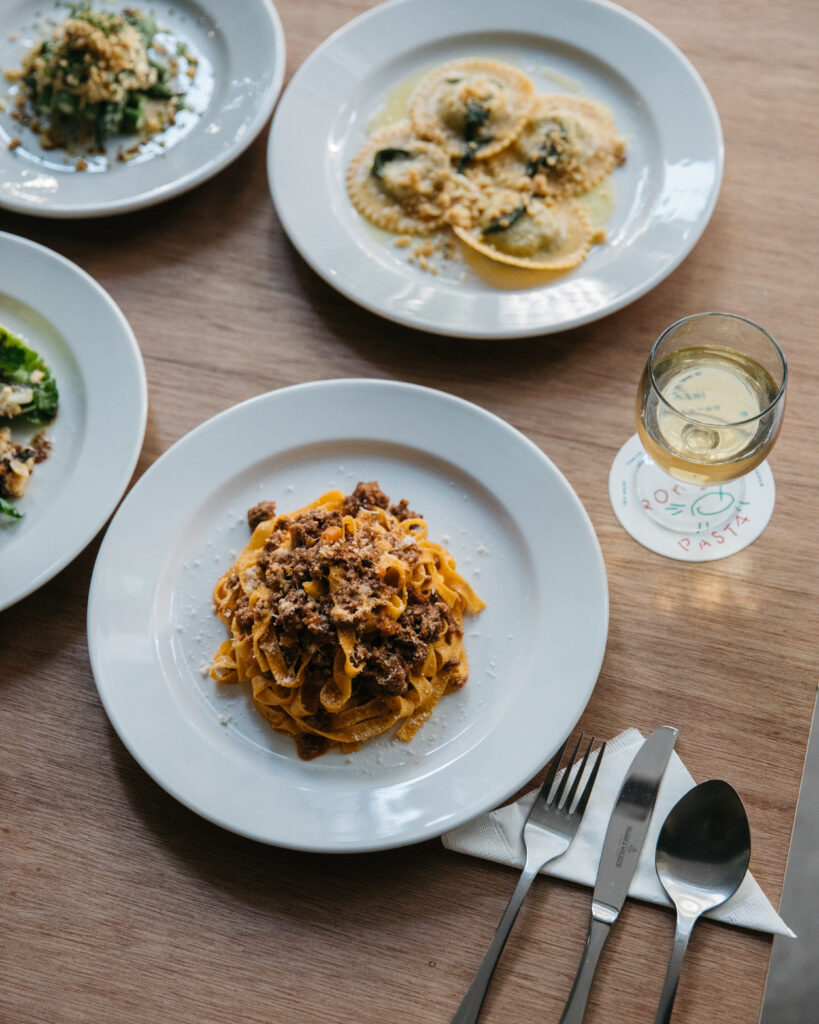


2023.06.28
PONY PASTA
Handmade every day. A chat about the depths of fresh pasta
PONY PASTA opened in December 2022 on the first floor of Kabutocho’s micro-complex “Keshiki”. As you pass through the entrance, you enter a space filled with green thanks to the plant shop, MOTH, which shares the first floor with the restaurant.
The head chef, Tim Mawn hails from England. When asked about the concept of the restaurant, he says “I wanted to make something you could eat often and something that you could adapt the taste of but that still has a craft element to it.”
“No one is really making fresh pasta in Japan. But it has this overlap with soba and udon. There’s a craft to it, and so I think it’s an easy concept to explain to Japanese people.” During lunch hours, customers can watch the pasta being made by hand in the open kitchen.
●Mixed leaf salad, fregola chopped egg, mustard
Let’s start with the salad. “I think a chef should put as much effort into a salad as he does into a main dish,” says Tim.
“The most important part of a salad is the dressing.” This dressing is an adaptation of a recipe he learned while living in Dinan, a town in Brittany in northern France.
The dressing is sweet, sour, savory, and very rich, yet light and elegant.
“I use cherry vinegar, honey, fresh garlic and then ferment them for one month, to create umami. Then I add mustard and olive oil. It’s simple, but there’s a lot of details. So customers think the salad is amazing, but it’s all thanks to the dressing.”
Ingredients change daily depending on what is in season. The leafy greens come from an organic farm in Yamanashi. They are grown outside and have a strong flavor. Beans, a pasta called fregola, chopped eggs, and rosemary bread croutons are then added for texture. With Parmesan cheese to finish.
“Everything I make is how I remember things tasting when I traveled around Europe, so I don’t adjust anything to Japanese palettes…. I want people to feel like they’re traveling to Europe while they’re eating. Maybe you can’t travel to Italy, but I want people to be able to taste authentic Italian flavors and pasta.”
●About the pasta
When you visit PONY PASTA, the first thing you want to order is fresh pasta.
“It took three months to develop the recipe for the dough. We make a very firm dough and that allows us to make thin noodles. It has a light egg flavor.”
Of all the types of pasta, Tim’s favorite is Tagliarini, a very thin, delicate pasta. “It’s very hard to cook, it can overcook within five seconds. It’s very difficult to perfect and that’s why I like it.”
The condition of the pasta dough changes daily depending on temperature and humidity, so he also needs to be able to read the dough. “Pasta is something everyone takes for granted, it’s so simple, but when you study it and make it fresh you realize how complicated it actually is,” he said.
Tim feels that making fresh pasta is similar to the handiwork of a craftsman.
“The art is repetition. We try to achieve consistency, and yet it’s kind of impossible. We’re doing the same thing every day, but somehow it’s always different. Even your mood can change the taste. Pasta is so deep!”
●Handmade Tagliatelle and slow-cooked ragù
“This is the most Italian pasta dish that you can eat. It’s usually cooked by grandmothers – it’s very classic. The one we make is as if it’s made by someone’s grandmother”
The sauce is made first as a soffrito (where vegetables are gently sautéed) before becoming the ragù. “The thing about a ragù is that it’s interchangeable with different ingredients, you could use wild deer, wild boar, pork, beef.”
What are the characteristics of PONY PASTA’s ragù?
“I think it’s unique because it’s eaten with flat pasta. In Italy, it’s always eaten with flat pasta, but everywhere else it’s eaten with spaghetti. It’s from Bologna, and there people usually eat it with freshly made Tagliatelle.”
It looks very simple, but the preparation is very complex, a common theme at PONY PASTA. “So we use different types of meat on different days, but the important part is that 40% is cut 5mm and 60% is cut 8mm, and this creates an uneven and interesting texture. It makes each mouthful feel different,” says Tim.
Seasoned with herbs such as bay leaf, thyme, rosemary, and sage, PONY PASTA’s ragù is brought to the table with steam wafting through the air.
●Handmade ravioli with broad beans, ricotta cheese, and sage butter
“Broad beans, lemon, ricotta; these ingredients to me make very Spring flavors and so it suits the season. And also they simply look pretty,” he says.
The ravioli is served mainly during dinner service, where the kinds of pasta tend to take on a more sophisticated shape.
“We use the best of what’s around and then utilize it in the best way. The same way that Europeans cook in season – I think there’s an overlap in that sense between Japanese and European styles of cooking.”
●Steamed asparagus, boiled egg, tarragon mayonnaise
Another dish from the dinner menu is based on a traditional French bistro dish. It is served with a caper and tarragon mayonnaise sauce, called gribiche. It looks similar to tartar sauce, but “it’s more elegant,” says Tim. This asparagus comes from Tochigi.
“The key to this dish is showcasing something in season, something that is at its peak, with a very beautiful rustic sauce. I finish it with homemade rosemary panko, French chives, and apple balsamic, which is then topped with homemade bacon. This is similar to the salad in that it looks very simple but has many different elements and steps in making it.”
Tim has worked as a chef-consultant for high-end restaurants in London. He wants to “be authentic and show artisan nature”. At PONY PASTA you can taste the excellent products he creates using seasonal ingredients, yet in a casual setting. The dishes have the warmth of an Italian grandma’s cooking, and you will never tire of them.

Timothy Mawn
Born in Nottingham 1975. After training in fine-dining establishments in London, he travelled to Europe to further deepen his knowledge of the culinary arts, setting in the region of Lyon in France. After returning to London he worked as executive chef of a group of exclusive private dining restaurants, before making the move to Tokyo in 2015, where since, he has consulted on new restaurants both in Japan and London.
Text : Takeshi Okuno
Photo : Nathalie Cantacuzino
Interview : James Koji Hunt
